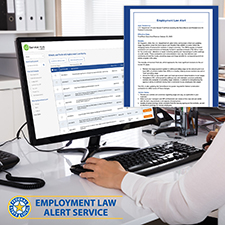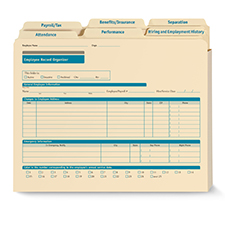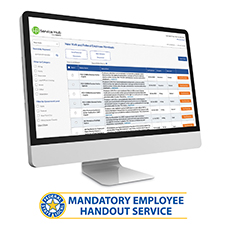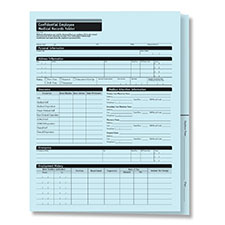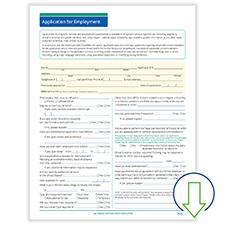
In most cases, the decision to approve or deny an employee’s request for time off is reasonably straightforward. Does the employee have available PTO? Did he or she follow established procedures, such as giving proper advance for the request? Will other employees be available to cover the work?
However, in situations that fall under the Family and Medical Leave Act (FMLA) , handling requests and managing unpaid time off can get tricky fast. Many business owners covered under this federal law struggle to interpret and uphold the FMLA guidelines.
With a deeper understanding of the rules and a fair approach, however, you can keep your company in complete compliance. Here are seven real-world FMLA scenarios and what you should do to stay on the right side of the law.
Scenario #1:
Addressing a pregnant worker’s request for leave
Janet, your recently hired accountant, has just informed you that she is pregnant with her first child. She wants to know if she will be paid during maternity leave and whether you will hold her job while she is out.
Legal Considerations
- The FMLA applies if you have 50 or more employees on the payroll (including part-timers). In this case, you are required to hold the job for 12 weeks, but the leave can be unpaid.
- To be eligible, the employee must be with the company for more than a year. In this case, Janet does not meet FMLA eligibility requirements because she has been at the job less than 12 months.
- Be aware, however, that many state, county and city laws give employees expanded leave rights beyond federal law. The laws may apply to smaller employers, provide longer leave periods or even require paid leave instead of unpaid leave. If laws conflict, you must go with the one that is most generous to the employee.
- Understand, too, that the Pregnancy Discrimination Act (PDA) requires you to treat Janet’s request like any other leave of absence, for any other reason, under company policy. That means her pay and benefits, eligibility, length of permitted time off, status during time off, reinstatement, the need for medical documentation and return-to-work releases should be consistent with other types of leave.
Managing medical leave requests properly can seem overwhelming, but with a deeper understanding of the rules and a fair approach, you can keep your company in compliance.
Scenario #2:
Recognizing absences that fall under the FMLA
Frank, a warehouse coordinator, has been with the company for eight years. Frank mentions over lunch with a few managers that he is tired from all the driving he’s been doing taking his son to physical therapy appointments. His supervisor, Susan, is part of the discussion. But it’s her last week with the company, so she isn’t too concerned with Frank’s attendance. She knows he’s been missing a lot of work, but she trusts that Frank will get his work done, so she doesn’t address it. A few weeks later, Frank’s new supervisor writes Frank up for excessive absences and demotes him to a part-time schedule.
Legal Considerations
- In this situation, Frank gave enough information to indicate that his absences might be covered under the FMLA. Just by mentioning his concern in conversation, Frank put the company on notice about job-protected leave.
- The correct response from Susan would be to recognize that Frank’s absences may qualify for FMLA leave and report it. Managers and supervisors need to be trained to spot potential FMLA-eligible absences. And any situation of potentially protected leave must be reported to HR or a senior manager. Finally, reporting procedures should be included in your employee handbook.
- Susan’s oversight is particularly risky. Frank’s demotion and reduction in pay based on his absences could give rise to an FMLA lawsuit against the company.
Scenario #3:
Determining whether a medical condition qualifies for FMLA leave
Your office manager, Lisa, has chronic back pain and starts missing work due to flare-ups. She’s an “eligible employee” under the FMLA, so you provide her the proper FMLA notices and a medical certification form so you can determine whether the time off qualifies for FMLA leave. She returns the medical certification on time. When reviewing the form, you see that under “Frequency” the doctor wrote “unknown,” and under “Duration” the doctor wrote “indefinite.” Should you designate her absences as FMLA?
Legal Considerations
- You should request more information from Lisa. In fact, you have the right to get an explanation of the frequency and duration of an employee’s leave from the doctor.
- For next steps, you should give Lisa at least seven days to resolve it on her own, and then you may contact her healthcare provider for more information, with Lisa’s authorization. Note that contact should never be made by the employee’s direct supervisor. Instead, have your human resources specialist or leave administrator, a senior manager of the company, or another healthcare provider make the call.
- You have the right to seek clarification or authentication of any information provided — but don’t go beyond what’s asked on the form. For example, you can call the doctor to confirm the answers to those questions, but you can’t ask other questions about the employee’s medical situation or personal data.
Scenario #4:
Dismissing a worker while on FMLA leave
Bob, a sales associate, is on FMLA leave for hip surgery. While he’s out, you discover in a routine audit that Bob was entering false sales to boost his commissions, essentially having items shipped to friends and returned once he was paid his commissions. The scam was going on for several months before his surgery, and he received a lot of money in unearned commissions. How should you handle this, knowing Bob is on job-protected FMLA leave?
Legal Considerations
- This situation may warrant termination. You have the right to discipline or terminate an employee for a legitimate business reason unrelated to the FMLA leave or health condition.
- The proper approach is to conduct a thorough investigation and document your findings. This will help your defense in an FMLA lawsuit. (It’s a best practice to consult with an attorney if you’re considering firing someone who is on protected leave.)
Scenario #5:
Intermittent leave for certain qualifying conditions
Your IT manager, James, has severe depression that requires him to stay home sometimes. The condition also demands frequent doctor’s office visits, where he works for a few hours and then leaves for the rest of the day. How do you account for his hours away from the business?
Legal Considerations
- Under some circumstances, employees may take FMLA leave intermittently — which means taking leave in short blocks of time, or by reducing their normal weekly or daily work schedules.
- Intermittent leave may be used for: medical appointments (e.g., prenatal or related to a serious health condition, of which mental health may qualify), continual treatments (e.g., chemotherapy, physical therapy or dialysis) and periods of severe morning sickness due to pregnancy.
- To manage intermittent leave, you’ll need James to fill out a leave request form and provide medical certification. He also needs to inform his supervisor every time he takes intermittent leave and complete the FMLA and/or state law time sheets accurately to track authorized leave.
Scenario #6:
Military caregiver leave under the FMLA
The husband of one of your call center employees suffered a severe leg injury in the line of duty. She’d like to assist him with his medical appointments for the injury, but it would require taking time off. Is she permitted to do this?
Legal Considerations
- The FMLA provides eligible employees up to 26 workweeks of job-protected leave to care for a spouse, son, daughter or next of kin who is a member of the Armed Forces (including the National Guard and Reserves) or a covered veteran and who is undergoing medical treatment or recuperating, in therapy or outpatient status or on temporary disability retired list for a serious injury or illness.
- Employers should recognize this type of leave exists -- and that it’s different from the usual 12-week FMLA scenarios. Leave is longer and broader; plus it’s not for an employee who is sick, but for an employee who is acting as a caregiver.
- The most important steps to take are obtaining medical documentation/certification and, like other types of FMLA leave, carefully tracking time taken.
Scenario #7:
Leave for adoption or foster care
Francisco, a senior warehouse manager, and his wife are preparing to adopt a child in a couple of months. He asks whether he is entitled to any time off.
Legal Considerations
- Caring for a child after adoption or foster care placement qualifies for FMLA, so Francisco is eligible for up to 12 weeks of job-protected leave to spend time with his new child.
- Because this is an FMLA-qualifying situation, you should ask Francisco to specify how much time off he wishes to take. If his wife works for your company, she may also be eligible for FMLA, so the couple can coordinate their time off accordingly.
Simplify Management of Time Off Requests
To comply with family and medical leave laws, it’s important to check all applicable federal, state and local regulations that may apply. You also need to follow a consistent, orderly request and approval process. The Fill-and-Save FMLA Administration Form Library provides the necessary forms to meet your legal obligations when managing all types of employee leave.






 Shopping cart
Shopping cart
